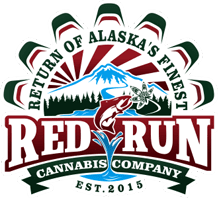Cannabinoids are chemical compounds which activate the cannabinoid receptors found throughout our bodies. Phytocannabinoids are the natural forms of these chemicals found in highest concentrations within female cannabis flowers – more specifically, within the resin glands on the surface of the flower.
Cannabinoids are a subset of the 80-100 terpene-derived molecules found only in cannabis plants. Thus, all cannabinoids are terpenoids, but not all terpenoids are cannabinoids. They all have similar structures, but have been shown to have very different effects. Most cannabinoids are found in both acid and neutral forms, and majority are prevalent in acids. Each has a unique influence on the body’s endocannabinoid system.
- Tetrahydrocannabinolic Acid (THC-A)
- Cannabidiolic Acid (CBD-A)
- Cannabichromic Acid (CBC-A)
- Cannabigerolic Acid (CBG-A)
- Delta 9 Tetrahydrocannabinol (∆-9-THC)
- CBG-A – Cannabigerolic Acid
- CBG – Cannabigerol
- THC-A – Tetrahydrocannabinolic Acid
- THC-C4 – Tetrahydrocannabinol-C4
- THCV-A – Tetrahydrocannabivarinic Acid
- ∆9THC – Delta-9-Tetrahydrocannabinol
- ∆8THC – Delta-8-Tetrahydrocannabinol
- THCV – Tetrahydrocannabivarin
- CBN-A – Cannabinolic Acid
- CBN – Cannabinol
- CBD-A – Cannabidiolic Acid
- CBDV-A – Cannabidivaric Acid
- CBD – Cannabidiol
- CBDV – Cannabidivarin
- CBC-A – Cannabichromic Acid
- CBC – Cannabichromene
- CBC-A – Cannabicyclol Acid
Tetrahydrocannabinolic Acid (THC-A)
Formula: C22H30O4
Molecular Mass: 358.4733 g/mol
Boiling Point: 105 °C (220 °F)
Tetrahydrocannabinolic Acid, like other acid cannabinoids, is not psychoactive. THC-A is strongly anti-inflammatory, encourages appetite, is anti-tumor, combats insomnia, and is antispasmodic. THC-A is the most abundant terpenoid (and Cannabinoid) in the vast majority of Cannabis grown in the U.S., reaching levels over 30% of dry weight for flowers from female, un-pollinated plants (sensimilla). Many “high THC” strains, when grown and harvested optimally, produce about 15% THC-A by dry weight, though this can vary widely.
Cannabidiolic Acid (CBD-A)
Formula: C22H30O4
Molecular Mass: 358.2144 g/mol
Ideal Decarboxylate Temperature: 120+ °C (248 °F)
Until recently, Cannabidiolic Acid was much more commonly found in higher concentrations in Ruderalis than in Cannabis. In the last few years, strains of Cannabis have been hybridized that produce more CBDA than THCA, including “Cannatonic-C6” and “ACDC.” CBDA has been shown to be both anti-inflammatory and anti-tumor.
Cannabichromic Acid (CBC-A)
Formula: C22H30O4
Molecular Mass: 358.2144 g/mol
Ideal Decarboxylate Temperature: 120+ °C (248 °F)
Cannabichromic acid is one of the three compounds synthesized by the plant, out of CBG-A. CBC-A is anti-inflammatory, weakly anti-fungal and strongly anti-bacterial.
Cannabigerolic Acid (CBG-A)
Formula: C22H32O4
Molecular Mass: 360.48708 g/mol
Ideal Decarboxylate Temperature: NA
Cannabigerolic acid is consider the ‘mother’ of all cannabinoids, because from it, the plant transforms it into all the other cannabinoids the plant makes. Besides it’s natural medicinal properties as a cannabinoid acid, it is the direct parent compound of CBG, a rare neuro-regenerative medicinal compound.
Delta 9 Tetrahydrocannabinol (∆-9-THC)
Formula: C21H30O2
Molecular Mass: 314.2246 g/mol
Boiling Point: 157 °C (315 °F)
Δ-9-tetrahydrocannabinol (commonly referred to as “Δ9-THC,” “D9-THC,” “d9-THC” or simply “THC”) is a neutral cannabinoid, well known for being strongly psychoactive. Of all the scientific discoveries that have been made about THC, probably the single most important was how THC enabled scientists to discover the existence of the endocannabinoid system in vertebrate animals (including humans): a critical part of physiology that, up until then, was unknown. THC has been shown to be effective in the treatment of a variety of ailments and disorders including pain, tumors, nausea and ADHD.
Cannabidiol (CBD)
Formula: C21H30O2
Molecular Mass: 314.2246 g/mol
Boiling Point: 180 °C (356 °F)
Cannabidiol is “non-psychoactive” (in that it does not produce the euphoria, time dilation, or anxiety normally produced by THC) and has been shown to be extremely valuable in the treatment of seizure disorders such as MS and Epilepsy. Its lack of psychoactivity makes it ideal in treating children, the elderly and patients that prefer to remain clear headed and focused. CBD is often as effective as THC in the management of pain and tumors. CBD also lowers blood sugar, and has been used in the treatment of Diabetes. CBD has a calming effect, and is useful in the treatment of stress related disorders and sleep loss.
Cannabichromene (CBC)
Formula: C21H30O2
Molecular Mass: 314.2246 g/mol
Boiling Point: 220 °C (428 °F)
Cannabichromene is also non psychoactive, and has been shown to be about ten times more effective than CBD in treating anxiety and stress. It also displays efficiency in treating inflammation, pain relief and is both anti-viral and anti-tumor. CBC has been shown to stimulate the growth of bone tissue.
Cannabigerol (CBG)
Formula: C21H32O2
Molecular Mass: 314.2246 g/mol
Boiling Point: Not Available
Cannabigerol is non psychoactive, and has been shown to stimulate the growth of new brain cells, including in the elderly; it should be noted that genuinely neurogenic compounds are extremely rare. CBG also stimulates bone growth, is antibacterial and anti-tumor, and combats insomnia.
Cannabinolic Acid (CBN-A)
Formula: C22H31O4
Molecular Mass: 359.48 g/mol
Ideal Decarboxylate Temperature: NA
Cannabinolic acid is the parent compound that decarboxylates into CBN. Curiously, in the plant, very little CBN is derived from CBN-A, and we do not see very much CBN-A in the plant; most CBN being derived from the oxidation of THC. CBN-A is anti-inflammatory, and likely anti-biological.
Cannabinol (CBN)
Formula: C21H26O2
Molecular Mass: 310.1933 g/mol
Boiling Point: 185 °C (365 °F)
Cannabinol is an oxidation product of THC. It normally forms when THC is exposed to oxygen and heat. A high level of CBN often reflects cannabis that is old or has been exposed to significant heat. CBN is known to be very slightly psychoactive and more strongly sedative than other known Cannabinoids. As such, samples with significant CBN (approaching 1% by weight) can be useful to treat insomnia. CBN is also somewhat effective as an anti-emetic and anticonvulsant.
∆-8-Tetrahydrocannabinol (∆-8-THC)
Formula: C21H30O2
Molecular Mass: 314.4617 g/mol
Ideal Decarboxylate Temperature: NA
“Delta-8-Tetrahydrocannabinol is an analogue of tetrahydrocannabinol (THC) with antiemetic, anxiolytic, appetite-stimulating, analgesic, and neuroprotective properties. Delta-8-tetrahydrocannabinol (delta-8-THC) binds to the cannabinoid G-protein coupled receptor CB1, which inhibits adenyl cyclase, increases mitogen-activated protein kinase activities, modulates several potassium channel conductances and inhibits N- and P/Q-type Ca2+ channels. This agent exhibits a lower psychotropic potency than delta-9-tetrahydrocannabinol (delta-9-THC).”
– NiH.gov
Cannabicyclol Acid (CBL-A)
Formula: NA
Molecular Mass: NA g/mol
Ideal Decarboxylate Temperature: NA
Very little is known about CBL-A, as the plant produces very little of it. Curiously, it is the most stable of the cannabinoid acids to heat, resistant to decarboxylation. As a result it yields very little CBL on heating. Cannabicyclol acid is both anti-inflammatory and anti-tumor.
Cannabicyclol (CBL)
Formula: NA
Molecular Mass: NA g/mol
Ideal Decarboxylate Temperature: NA
Cannabicyclol is a degradative product – with exposure to light, cannabichromene converts to CBL. It’s medical properties are not known as it appears in such minuscule concentrations in comparison to other cannabinoids.

